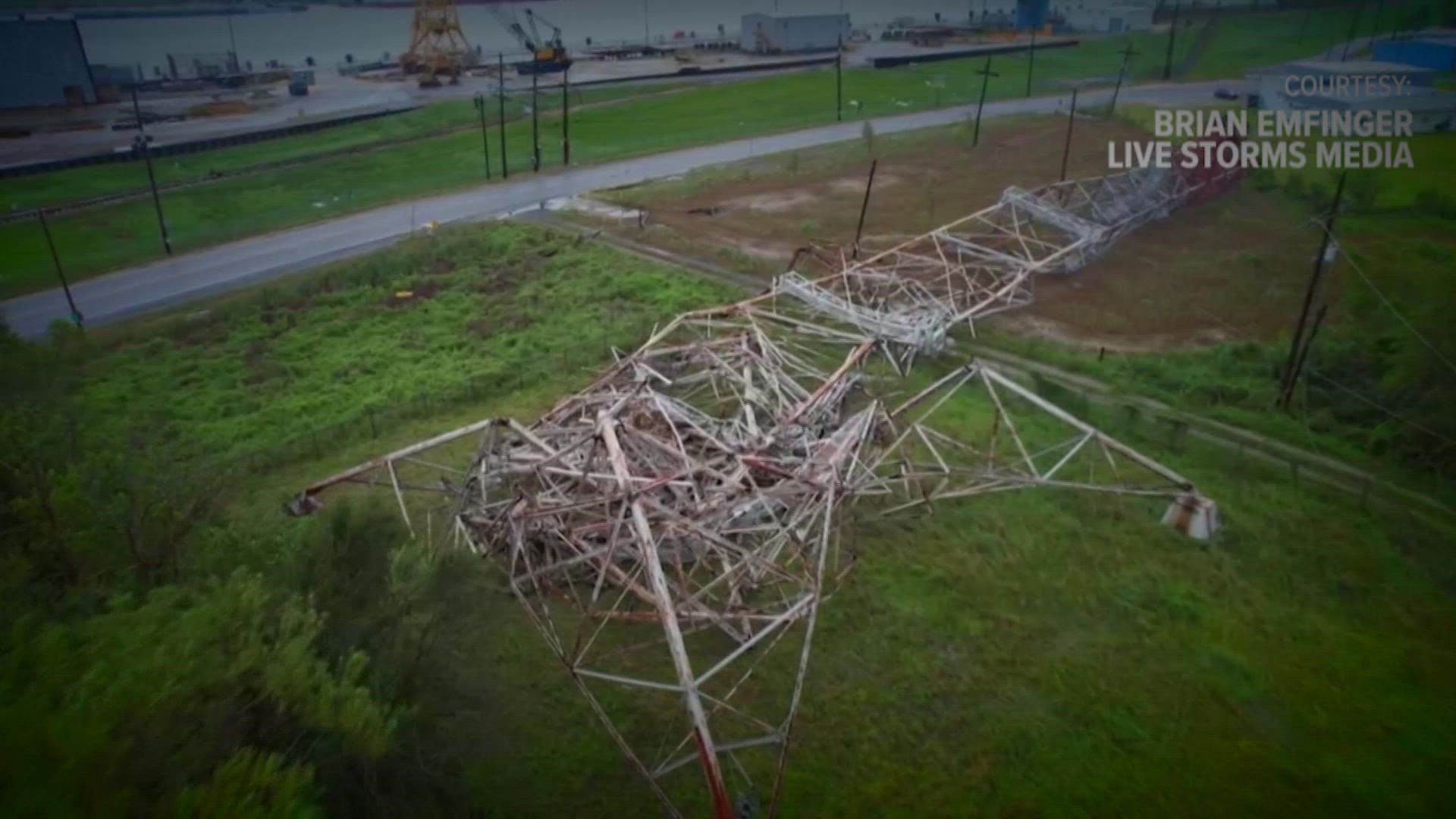NEW ORLEANS — A year ago, Hurricane Ida’s devastating winds turned a rusty Entergy transmission tower into a mangled heap and dunked high-voltage power lines into the Mississippi River.
Last week, that key corridor carrying outside power into the New Orleans area was restored, with new lines spanning the river between two sturdier, thicker, rust-free towers.
The stark contrast between Ida’s wreckage and the new system, built at a cost of $48 million and promised to be able to withstand 175-mile-per-hour gusts, highlights the importance -- and high cost -- of making southeast Louisiana’s electric grid more resilient to ever-increasing and more powerful storms.
Entergy has embarked on a $15 billion resilience plan over the next decade to strengthen its whole regional grid, with stretches from northern Arkansas to the Gulf Coast.
Its Entergy New Orleans subsidiary submitted a $1.5 billion plan to the New Orleans City Council, which regulates the utility inside the city. It includes $1.2 billion for hardening 625 miles of power lines and 33,000 structures on its street-level distribution system, $200 million to set up a microgrid in each city council district, and $52 million hardening the transmission lines that deliver power from area power plants and the outside world.
But Entergy Louisiana, which operates much of the grid surrounding New Orleans, including all the main pathways into the city, hasn’t submitted its plan to its regulators, the Louisiana Public Service Commission.
Entergy is hoping to tap into federal funds from the $1.2 trillion Infrastructure Investment and Jobs Act. But only $13 billion of that is earmarked for power grid resilience projects, with individual utilities competing for a share of $10.5 billion.
That means Entergy’s proposal to spend $15 billion on resilience projects will depend heavily on customers paying higher bills.
Commissioner Lambert Boissiere III, who represents New Orleans and areas along the river that include where the tower collapsed during Ida, said the Commission will try to make Entergy pay for as much of the work as possible.
“We're doing our best to get the shareholders to eat a significant portion of that. Now, of course, most of it is borne on ratepayers,” said Boissiere, one of two commissioners running for re-election this fall. “Our job is to get us the most reliable power at the cheapest rate, and that is our test for everything that we do.”
But Helena Moreno, president of the New Orleans City Council, said the Public Service Commission should be more aggressive to investigate what went wrong with the grid’s resilience in Hurricane Ida. Boissiere said the commission has done that, opening a “backward-looking” docket to understand what Entergy has done in the past to prevent major damage and power outages.
The most obvious problem during Hurricane Ida was that all eight pathways for delivering high-voltage power from the outside world failed during the storm. The downed tower in Avondale was only one of those. But Entergy Vice President Sean Meredith said the other transmission failures, including damage to insulation on the lines, were minor and were fixed within a few days.
Ida exacted most of its damage on the street-level system of power poles, lower-voltage lines, and transformers.
“A lot of this infrastructure was put in in the 60s, 70s, and 80s, when multiple Category 4 storms coming through an area was just not something that we considered feasible at the time,” Meredith said. “Now, in back-to-back seasons, we've had to evolve our standards, strengthen them to withstand those type of events.”
The question for regulators to consider is if the upgrades Entergy wants to pursue will be worth the cost. Meredith said they should cut power restoration times in half.
“And we modeled this to a thousand different scenarios and we’re very, very confident in our ability to show a significant improvement in that,” he said. “And that's a huge benefit to our customers and our communities.”
But Entergy has made such assurances before. When WWL-TV broadcast the first images of the downed tower in Avondale on Aug. 30, 2021, Entergy Louisiana CEO Philip May assured viewers that it was “one of the most robustly engineered towers or structures on the Entergy system,” had just passed inspection and did not need to be upgraded.
Looking at the rusted wreckage the morning after Ida blew through, Moreno couldn’t believe that it was the same tower May had described. Returning last week, on the day the new tower was energized, she was struck by the vast improvement.
“There is no comparison between what we're seeing here, David, to what you and I saw,” she told me. “That (old tower) didn't look super resistant when you compare it to this!”

